Every year, the Forest Ecosystem Monitoring Cooperative gathers cooperators and interested individuals from across the region to learn about the latest science, research, policy and monitoring related to the region's forest ecosystems. The conference varies in format and focus from year to year, and provides a valuable place to network, learn and share.

2025 Forest Ecosystem Monitoring Cooperative Conference - Forest dynamics and stewardship at a crossroads: science, partnerships, and adaptive strategies for moving forward
The annual conference of the Forest Ecosystem Monitoring Cooperative provides an important opportunity for communication, exchange of ideas, and expanding collaboration around forest ecosystem management and monitoring in the region.
Past Conferences


2024 Forest Ecosystem Monitoring Cooperative Conference - Forest Futures: Building Bridges to Shape Strategies Collaboratively
The annual conference of the Forest Ecosystem Monitoring Cooperative provides an important opportunity for communication, exchange of ideas, and expanding collaboration around forest ecosystem management and monitoring in the region.
The 2024 FEMC Annual Conference will highlight outcomes from diverse partner connections and how these bridges were built. We will bring together partners and stakeholders to exchange knowledge and strategies to address emerging challenges in forest management including climate change impacts, evolving community needs, and shifting resources.
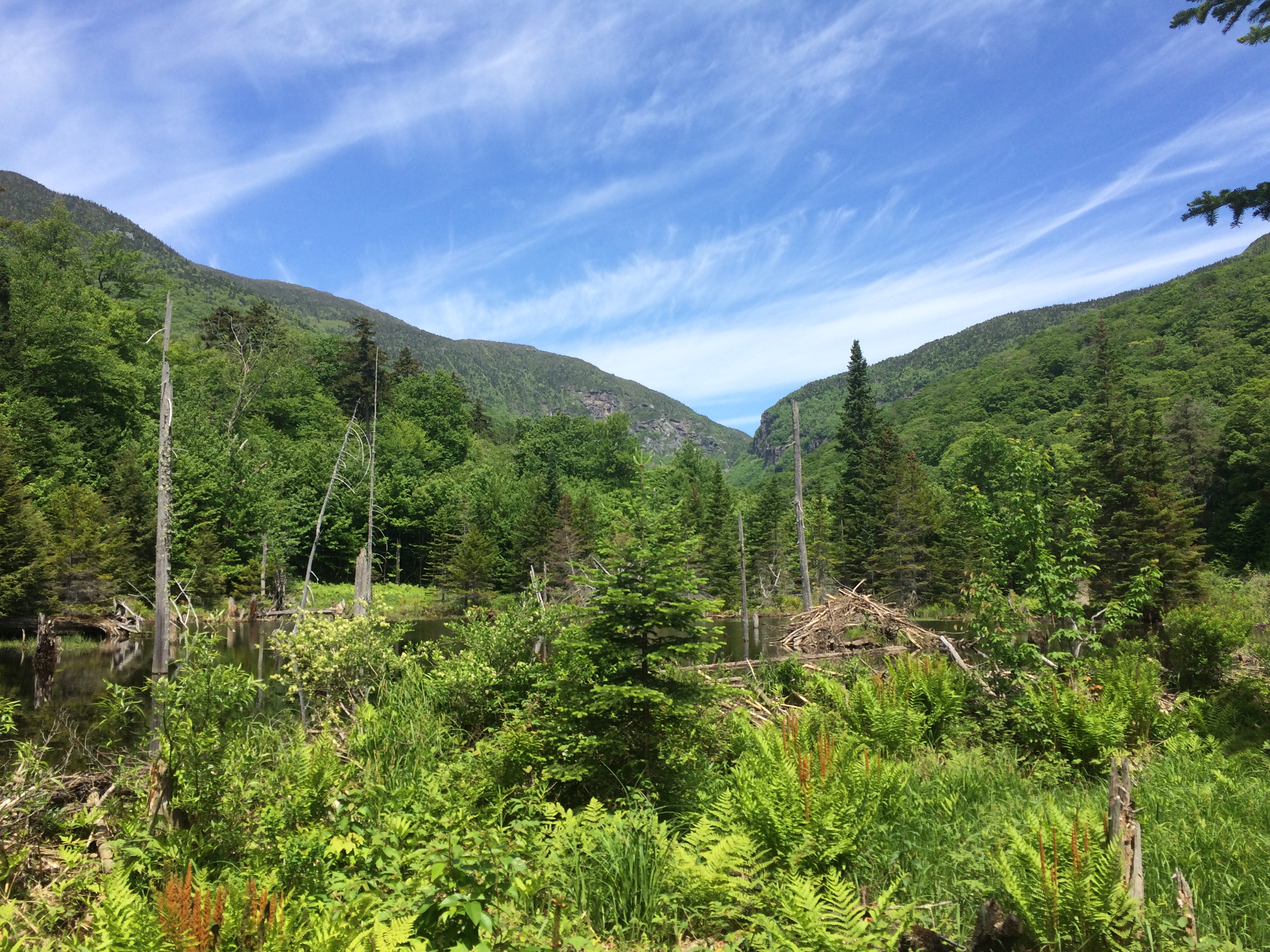
2023 Forest Ecosystem Monitoring Cooperative Conference - Forests as Solutions to Climate Change, Biodiversity, and Well-being
Forests can be a powerful vehicle to address significant global challenges from climate change to biodiversity to human well-being. In monitoring and studying forests, we better understand the promise and limitations of what forests can provide and how forest management and community engagement can amplify those impacts. The 2023 FEMC Annual Conference will provide an opportunity to discuss how forests can contribute to climate mitigation and resiliency; biodiversity; and workforce development, economic opportunity, recreation, and other aspects related to human well-being.

2022 Forest Ecosystem Monitoring Cooperative Conference - Advances in Forest Science: The role of innovation and technology in stewardship and engagement
Technological advances in forest science have improved our ability to monitor, assess, and understand forested ecosystems. However, the use of new technologies varies in their accessibility, utility and interpretation. New innovations, ranging from remote sensing technologies to management tools and community science, must balance the needs of various stakeholder groups. The 2022 FEMC Annual Conference will explore advances in forest science, how these advances related to applied practices, and how our community can benefit from new approaches.
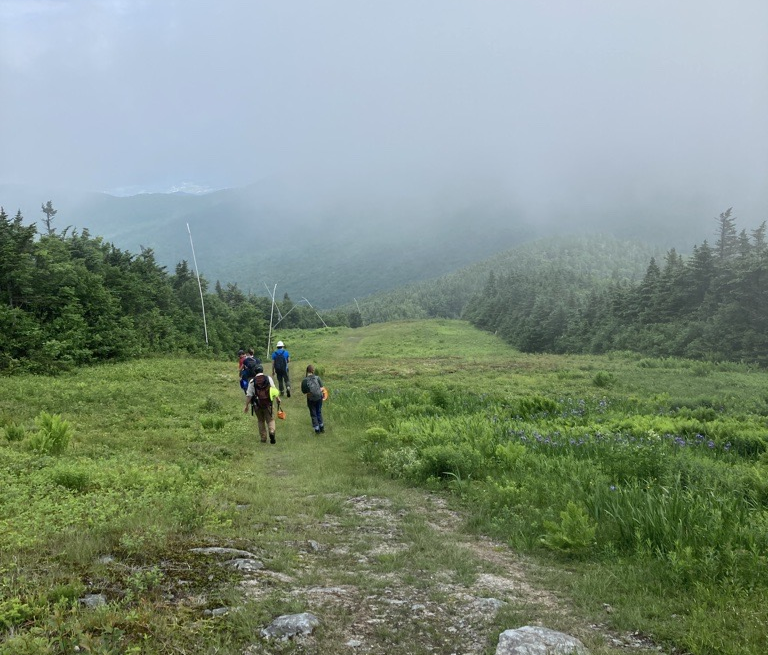
2021 Forest Ecosystem Monitoring Cooperative Conference - Facing Change: Reimagining forested communities in a time of disruption
Our forests and communities are experiencing a wide variety of disruptions and disturbance - from the impacts of forest pests, ungulate browse, and climate change, to the indirect outcomes experienced during the Covid-19 pandemic on forest-based recreation, forest fragmentation, and changing community composition. The 2021 FEMC Conference will explore a range of disturbances and disruptions, identify monitoring that can help us understand the response of the forest ecosystems, and learn about tools and resources available to help communities go from surviving to thriving during this time of change.

2020 Forest Ecosystem Monitoring Cooperative Conference - Revealing a changing forested landscape: Where we have come from, what we have learned, and what's next in long-term ecosystem monitoring.
Long-term ecosystem monitoring provides our community with the means to explore data trends and discover changes happening across the forested landscapes of the Northeast. While manipulation and experimentation is not conducted in monitoring programs, the outcomes from monitoring often provide the basis for new research questions and innovation in techniques and methodology. The 2020 FEMC Conference will explore the major findings of key monitoring programs occurring across northeastern forests, share research discoveries and how the ecosystem has changed, and identify future opportunities and innovations in monitoring.
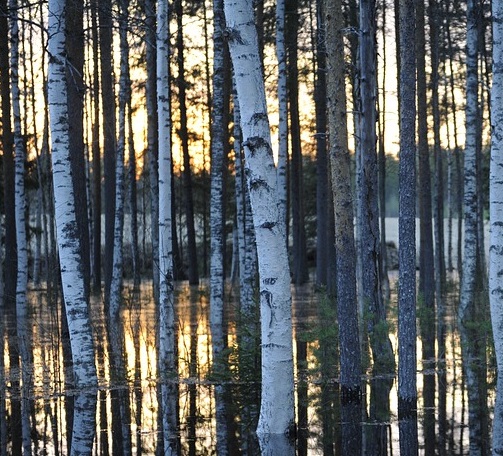
2019 Forest Ecosystem Monitoring Cooperative Conference - Monitoring for Impacts of Climate Change: Tracking and measuring outcomes in northeastern forests
As our understanding of climate change and its impacts on forested ecosystems in the Northeast grows, many innovative efforts are being initiated to track, mitigate, and adapt to changing climate patterns. Following on the theme of the previous FEMC conference, this year's conference will focus in on the ways in which we can monitor and assess how impacts from climate change are being felt, and how we can evaluate the success of efforts to manage or mitigate these impacts.
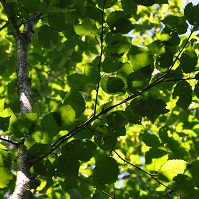
2018 Forest Ecosystem Monitoring Cooperative Conference - Forests and Climate Change: Managing impacts and planning for the future
Climate change continues to be a top threat facing the forests of the northeast and the people that depend on them. As temperatures warm and precipitation patterns shift, the cumulative responses of individual trees across the landscape will cascade to affect wildlife habitat, water quality, flood protection and economic values of forests. This year, the plenary session of the conference will focus on surveying the impacts of climate change on key forest ecosystem processes and services, with a focus on forests, wildlife and water.

2017 Forest Ecosystem Monitoring Cooperative Conference - Beyond Communication: Advocating for Science and our Forests
This year's conference promises to deliver a dynamic array of talks and workshops designed to help collaborators build capacity to communicate and market their work to a broader stakeholder audience. This conference will help participants develop messages and share information in such a way that the public sees the value of forest ecosystem monitoring and research in our region and its relevance to their lives.
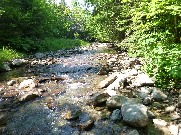
2016 Vermont Monitoring Cooperative Conference - Healthy Forests, Healthy Watersheds
In the final year of being solely focused on Vermontl, the 2016 Annual Conference featured an array of presenters from various disciplines speaking to the relationship between forests and watersheds. The morning plenary session explored this relationship specifically, followed by a question-and-answer panel made up of the speakers, which allowed the morning speakers to explore these topics in more depth. As in past years, the afternoon was devoted to concurrent sessions where collaborators from across the region presented their most recent work, a variety of working group sessions convened by members of our professional community, and a poster session and social hour.

2015 Vermont Monitoring Cooperative Conference - 25 Years of Forest Ecosystem Monitoring: Trends, Patterns, and Lessons Learned
The VMC celebrated its 25th year of environmental monitoring by taking stock of how long-term data can be used to keep us apprised of the condition of our forested ecosystem, identify emerging threats and inform planning and management decisions. This year focused on the long-term records of many of our VMC/FEMC collaborators. The morning plenary featured invited presentations from experts in various disciplines synthesizing the long- term trends in their data and implications for the forested ecosystem. As in past years, the afternoon was devoted to concurrent sessions where collaborators from across the region presented their most recent work, followed by a variety of working group sessions convened by members of our professional community.
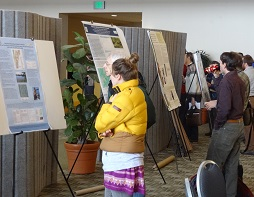
2014 Vermont Monitoring Cooperative and Mt. Mansfield Science and Stewardship Conference - Science to Policy: Benefitting from Actionable Science
This year, VMC partnered with the UVM Natural Areas Program to deliver a joint conference around the theme of translating research and monitoring findings into actionable change. Attended by over 150 individuals, the conference featured a plenary delivered by policy-makers on how to increase the impact of research at multiple scales, delivered an expanded set of contributed talks, and featured self-designed working group sessions in the afternoon, including a planning session on the future Mt. Mansfield Science and Stewardship Center, a convening of the Vermont Water Monitoring Council, and a solicitation by the Agency of Natural Resources for ways to augment the use of science at the agency. VMC has once again published a proceedings of the event and made most of the videos and presentations from the day available on the meeting page.
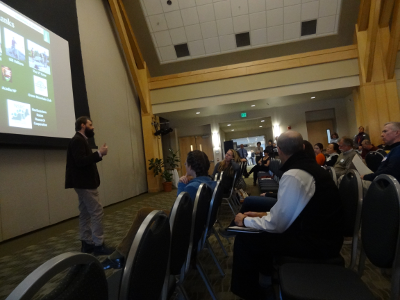
2013 Vermont Monitoring Cooperative Annual Conference - New Collaborations for Emerging Forest Needs
The 2013 Annual Conference, attended by over 100 people, included a keynote by Dr. Jon Erickson of UVM, presentations from all three Agency of Natural Resources Commissioners and two US Forest Service officials on the barriers and opportunities to collaboration in forest ecosystem monitoring and research. VMC has made videos and abstracts available on the meeting website, and a full proceedings was published in early 2014.
2012 Vermont Monitoring Cooperative Annual Meeting - Acidification and Monitoring of Vermont's Forest Resources
Although acid deposition is not a new problem, its impacts are still cycling through Vermont’s forests, waterbodies and soils. Rich Scheffe from the EPA led the morning presentations followed by scientists from Vermont highlighting the effects of acidification in Vermont’s forests and waterbodies. The afternoon session gave Cooperators a chance to hear about each other’s work. There was a special appearance by Dave Bloniarz of i-Tree fame and a panel discussion at the conclusion of the meeting.
2011 Vermont Monitoring Cooperative Annual Meeting - Invaders in Vermont Forests
Appropriately held on Halloween, this meeting focused on invasive species in Vermont. Dean Thomas Vogelmann of UVM College of Agriculture and life scientists gave a fascinating talk about how Climate Change favors certain species, many not native to Vermont. The Commissioners of DEC and FPR weighed in on invasives and there was news from VMC Cooperators. A panel discussion on invasives was moderated by RSENR’s Deanne Wang.
2010 Vermont Monitoring Cooperative Annual Meeting - Forecasting the Forest’s Future???
The theme says it all, how can monitoring predict future health of forested ecosystems? Brian Mitchell from the National Park Service gave the keynote on how this might be accomplished. There were presentations by long time VMC cooperators and a panel discussion on the meeting’s theme moderated by Kimberly Wallin of the USFS and RSENR.
2009 Vermont Monitoring Cooperative Annual Meeting - Monitoring Vermont’s Environment: A Community Approach Toward Sustainability
The VMC presented its cooperatively produced synthesis report, Vermont’s Changing Forests at this meeting. The report’s editor, David Sleeper of Hubbard Brook Research Foundation, was the featured speaker and a student panel discussed their perspective on achieving sustainability. Presentations by VMC cooperators and staff from the Green Mountain National Forest and the Lake Champlain basin program were also featured.
2008 Vermont Monitoring Cooperative Annual Meeting - Carbon, People and Vermont’s Ecosystems
Robert Paquin from Senator Leahy’s office reflected on 18 years of VMC history and Larry Forcier filled in admirably for Dr. F. Herbert Bormann of Yale who was unable to attend. This meeting focused on carbon from the different angles of cycling, sequestration, land use planning and biomass for energy. Policy was also considered in the role government plays in reducing fossil fuel dependence.
2007 Vermont Monitoring Cooperative Annual Meeting - Vermont’s Forested Ecosystems: Past, Present and Future
Dr. Charles Cogbill pondered what a “pristine” forest ecosystem looks like considering all the changes in species types and the landscape itself over time; we got an update from Randy Morin of USFS on the current health of Vermont forests, Dr. Timothy Perkins and Dr. William Keaton presented different research that highlighted the effect of climate on sugaring and forestry into the future. Updates from 3 cooperators rounded out the meeting.
2006 Vermont Monitoring Cooperative Annual Meeting -
Presentations at this meeting ranged from using remote sensing to detect invasive Honeysuckle in the Taconic Mountains to a perspective on what long-term monitoring really is from USDA soil scientist Tom Villars. A web-based tool for assessing tree health to inform natural resource professionals was unveiled at this meeting along with other presentations and updates from cooperators.
2005 Vermont Monitoring Cooperative Annual Meeting - Current issues in long-term monitoring and research of forest ecosystems
This meeting focused on core VMC cooperators who presented information about the status of their monitoring efforts in Vermont. We heard from Beverly Wemple about the paired watershed study, two presentations on different aspects of mercury contamination from Neil Kamman and Eric Miller, and presentations from Sandy Wilmot on forest health and Barbara Schultz (formerly Burns) on Forest Tent Caterpillar. William Keeton shared data from his Vermont Forest Ecosystem Demonstration project.
2004 Vermont Monitoring Cooperative Annual Meeting - Long-term Monitoring and Research in Vermont’s Forested Ecosystems **Special Mercury Session**
The mercury session featured special guest Jerald Keeler from the University of Michigan School of Public Health and VMC collaborator. Eric Miller presented his original research on mercury and forest canopy, Neil Kamman summarized mercury studies in Vermont watersheds and Chris Rimmer of the Vermont Center for Ecostudies showed results from his work with montane birds. A session on VMC- sponsored long term monitoring projects followed then Melody Burkins envisioned the future of the VMC and invited the attendees to participate during an open discussion.
2003 Vermont Monitoring Cooperative Annual Meeting -
This meeting had several “sub-themes” with presentations on each. Time for discussion was built into the agenda. The sub-themes were watersheds, atmospheric Influences, biodiversity watch, biodiversity, and soils with the 200 Year Soil Monitoring Project being implemented. The remainder of the meeting was given over to the many facets of the Forest Ecosystem Management Project. Other highlights were Forest Sensitivity Mapping and the Paired Watershed Study.
2002 Vermont Monitoring Cooperative Annual Meeting - Concurrent sessions on mercury research and planning the Forest Ecosystem Demonstration Project
Along with excellent presentations from VMC cooperators this meeting stood out because of two sessions where attendees got together to hash out how to do collaborative science. The morning sessions were designed to feed into the two concurrent sessions, after which plenary session was held to chart the way forward. Some of the collaborations forged at this meeting are still active. Notes from the Mercury Working Group are available.
